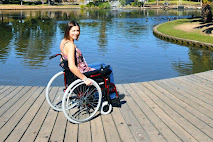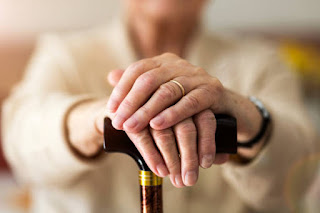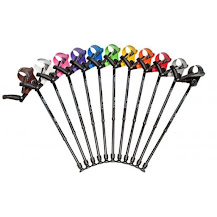Different Types of Crutches
Forearm crutches are often preferred over other types of crutches, canes, and mobility aids because they make walking more comfortable and give people with good upper body strength better control. Forearm crutches are an excellent option for people with mobility issues who want to stay active but don't want to use a walker or rollator because they are lighter and don't stick out as much. In addition to giving you stability, they help you stand up straighter and don't tire you out as much as using underarm crutches.
How Many Kinds of Crutches Are There?
1. Forearm Crutches
- Forearm crutches are also called Lofstrand and elbow crutches, though they aren't as well-known.
- The crutch's cuff must be between 1 and 1.5 inches from the elbow. The patient can bend their arm from 15 to 30 degrees with the forearm crutch.
- The tip of the crutch should be 2 to 4 inches away from the side of the foot and 6 inches in front of the foot.
- People in Europe often use these kinds of crutches.
- Patients with Polio or other disabilities that last a lifetime in the US have suggested these designs because they are easy to use and fit their bodies well. Corner shower stool is another excellent option for this patient.
2. Gutter Crutches - Gutter crutches are just forearm crutches that have been changed in a small way. Most people know that people with rheumatoid arthritis use gutter crutches.
- A gutter crutch will help patients or older people keep their balance and spread their weight if they need to use a tool.
- The forearms of a gutter crutch are soft and padded to make them comfortable.
- The strong metal tube has a handgrip and a strap that can be adjusted. Rubber ferrule is used to make the hand feel good all around.
- Most people with rheumatoid arthritis are given a gutter crutch because their grip is weak because of joint pain. You can search for the option where can I buy crutches to know about the buying options.
3. Hands-free Crutch - The bad things about underarm crutches led to the creation of crutches that don't need to be held.
- We've talked about underarm or axillary crutches, which are not friendly.
- It is known that using them often and in unusual ways can hurt your hands, underarms, and wrists.
- So, these crutches that don't need your hands were made. Most of the time, these are called knee crutches.
- These are made for people who are a little less mobile, but if they can use them, they can go almost as far as anyone else.
- These crutches don't have anything for your hands or wrists to do. Instead, they have straps around your thigh and knee to help you stand up. You can think of corner shower stool for the patient who need crutches.
Conclusion
Whatever your injury, you can follow your doctor's orders and utilize one of these crutches to deal with your illness and get back to your routine. If you want to buy crutches you can search for the option where can I buy crutches.




Comments
Post a Comment